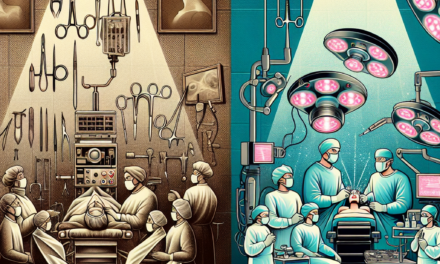Key Highlights of Significant Healthcare M&A Transactions in 2025
The healthcare sector has witnessed a transformative wave of mergers and acquisitions (M&A) in 2025, driven by technological advancements, regulatory changes, and evolving patient needs. This article delves into the key highlights of significant healthcare M&A transactions that have shaped the industry landscape this year. We will explore five critical subtopics, each providing insights into the motivations, implications, and outcomes of these transactions.
1. The Rise of Telehealth: Mergers Fueling Digital Transformation
In 2025, the telehealth sector has experienced unprecedented growth, prompting several high-profile mergers and acquisitions. The COVID-19 pandemic accelerated the adoption of telehealth services, and as a result, companies are now seeking to consolidate their positions in this burgeoning market.
One of the most notable transactions was the merger between TeleMed Solutions and HealthConnect, valued at $3 billion. This merger aimed to create a comprehensive telehealth platform that integrates virtual consultations, remote patient monitoring, and electronic health records (EHR) systems. The combined entity is expected to serve over 10 million patients annually, significantly enhancing access to healthcare services.
Key motivations behind these mergers include:
- Market Expansion: Companies are looking to expand their geographical reach and patient base. By merging, they can leverage each other’s strengths and resources.
- Technological Integration: Merging allows companies to combine their technological capabilities, leading to more robust and user-friendly platforms.
- Cost Efficiency: Consolidation can lead to reduced operational costs, enabling companies to invest more in innovation and service delivery.
Moreover, the merger between TeleMed Solutions and HealthConnect is expected to enhance patient engagement through improved user interfaces and personalized care plans. The integration of advanced analytics will also allow for better health outcomes by identifying at-risk patients and providing timely interventions.
As telehealth continues to evolve, we can expect further consolidation in the sector, with companies seeking to enhance their service offerings and improve patient experiences. The trend indicates a shift towards integrated care models that prioritize accessibility and convenience.
2. Pharmaceutical Giants: Strategic Acquisitions for Innovation
In 2025, pharmaceutical companies have been actively pursuing acquisitions to bolster their research and development (R&D) capabilities. The race to develop innovative therapies, particularly in areas like oncology and rare diseases, has led to significant transactions that reshape the competitive landscape.
A standout acquisition was Pfizer’s purchase of BioInnovate for $5 billion. BioInnovate is known for its cutting-edge gene therapy technologies, which align with Pfizer’s strategic focus on personalized medicine. This acquisition not only enhances Pfizer’s R&D pipeline but also positions the company as a leader in the rapidly evolving field of gene therapy.
Key factors driving these acquisitions include:
- Access to Novel Technologies: Acquiring smaller biotech firms allows pharmaceutical giants to access innovative technologies and therapies that can complement their existing portfolios.
- Accelerated Time to Market: By acquiring companies with promising drug candidates, larger firms can expedite the development process and bring new treatments to market faster.
- Competitive Advantage: Strategic acquisitions can provide a competitive edge by diversifying product offerings and enhancing market presence.
The acquisition of BioInnovate is expected to yield significant synergies, with Pfizer leveraging its extensive resources to accelerate the development of gene therapies. This move is indicative of a broader trend in the pharmaceutical industry, where companies are increasingly looking to acquire innovative startups to stay ahead of the competition.
As the pharmaceutical landscape continues to evolve, we can anticipate more strategic acquisitions aimed at fostering innovation and addressing unmet medical needs. The focus on personalized medicine and advanced therapies will likely drive further consolidation in the sector.
3. Healthcare Systems: Consolidation for Enhanced Care Delivery
The healthcare systems sector has seen a wave of consolidation in 2025, with hospitals and health systems merging to create integrated care networks. This trend is driven by the need to improve care coordination, reduce costs, and enhance patient outcomes.
A significant transaction in this space was the merger between Unity Health System and CareFirst Health Network, valued at $4 billion. This merger aims to create a comprehensive healthcare system that offers a full spectrum of services, from primary care to specialized treatments.
Key motivations for this consolidation include:
- Improved Care Coordination: Merging allows healthcare systems to streamline operations and enhance communication among providers, leading to better patient care.
- Cost Reduction: Consolidation can lead to economies of scale, reducing administrative costs and allowing for more investment in patient care.
- Enhanced Access to Services: A larger network can provide patients with greater access to a variety of services, improving overall health outcomes.
The merger between Unity Health System and CareFirst Health Network is expected to result in a more integrated approach to healthcare delivery, with a focus on preventive care and chronic disease management. By combining resources, the new entity aims to enhance patient experiences and outcomes through coordinated care pathways.
As healthcare systems continue to consolidate, we can expect to see a shift towards value-based care models that prioritize patient outcomes over volume. This trend will likely reshape the way healthcare is delivered, with a greater emphasis on collaboration and integration.
4. Health Tech Startups: Venture Capital and Strategic Acquisitions
The health tech startup ecosystem has flourished in 2025, attracting significant venture capital investments and strategic acquisitions from established players. The demand for innovative solutions to address healthcare challenges has led to a surge in M&A activity in this sector.
A notable acquisition was the purchase of HealthTrack by MedTech Innovations for $1.5 billion. HealthTrack specializes in AI-driven health analytics, providing insights that help healthcare providers make data-informed decisions. This acquisition aligns with MedTech Innovations’ strategy to enhance its digital health offerings.
Key drivers of M&A activity in the health tech sector include:
- Rapid Technological Advancements: The pace of innovation in health tech is accelerating, prompting established companies to acquire startups with cutting-edge solutions.
- Increased Demand for Data-Driven Solutions: Healthcare providers are increasingly seeking tools that leverage data analytics to improve patient care and operational efficiency.
- Competitive Landscape: As the health tech market becomes more crowded, companies are looking to differentiate themselves through strategic acquisitions.
The acquisition of HealthTrack is expected to enhance MedTech Innovations’ capabilities in predictive analytics and population health management. By integrating HealthTrack’s technology, MedTech aims to provide healthcare providers with actionable insights that can lead to better patient outcomes.
As the health tech landscape continues to evolve, we can anticipate further M&A activity as companies seek to stay competitive and meet the growing demand for innovative solutions. The focus on data-driven decision-making will likely drive more collaborations between tech startups and established healthcare organizations.
5. Regulatory Changes and Their Impact on M&A Activity
In 2025, regulatory changes have played a significant role in shaping the M&A landscape in healthcare. The introduction of new policies aimed at promoting competition and transparency has influenced the strategies of companies looking to merge or acquire.
One notable example is the Federal Trade Commission’s (FTC) increased scrutiny of healthcare mergers, particularly those involving large hospital systems. In response to these regulatory changes, several proposed mergers have been abandoned or restructured to address antitrust concerns.
Key implications of regulatory changes on M&A activity include:
- Increased Due Diligence: Companies are now conducting more thorough due diligence to assess potential regulatory hurdles before pursuing mergers.
- Focus on Compliance: Organizations are prioritizing compliance with antitrust laws and regulations to avoid potential legal challenges.
- Shift in Strategies: Companies may opt for smaller, strategic acquisitions that are less likely to attract regulatory scrutiny.
The impact of regulatory changes on M&A activity is evident in the healthcare sector, where companies are adapting their strategies to navigate the evolving landscape. As regulators continue to emphasize competition and consumer protection, we can expect to see a more cautious approach to mergers and acquisitions in the coming years.
Conclusion
The healthcare M&A landscape in 2025 has been marked by significant transactions that reflect the industry’s ongoing transformation. From the rise of telehealth and strategic pharmaceutical acquisitions to the consolidation of healthcare systems and the flourishing health tech startup ecosystem, these developments highlight the dynamic nature of the sector.
As companies navigate regulatory changes and seek to enhance their service offerings, we can anticipate further consolidation and innovation in the healthcare space. The key takeaways from this year’s M&A activity include:
- The importance of digital transformation in healthcare, particularly through telehealth and health tech innovations.
- The strategic focus of pharmaceutical companies on acquiring innovative technologies to drive R&D efforts.
- The trend towards consolidation among healthcare systems to improve care delivery and patient outcomes.
- The growing role of venture capital in fueling health tech startups and driving M&A activity.
- The impact of regulatory changes on M&A strategies, leading to increased scrutiny and a more cautious approach.
As we move forward, the healthcare industry will continue to evolve, driven by the need for innovation, improved patient care, and a focus on value-based outcomes. The M&A transactions of 2025 serve as a testament to the resilience and adaptability of the healthcare sector in the face of ongoing challenges and opportunities.





